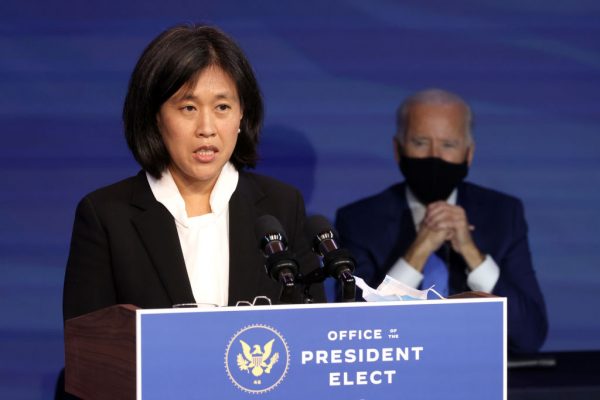The Biden administration announced on March 23 that it had moved to reinstate tariff exemptions on more than 350 types of imported Chinese goods — accounting for about two-thirds of product exclusions that had expired at the end of 2020, under “Section 301” of U.S. tariffs that had been imposed during the Trump era.
News of the exemptions, which will be applied retroactively to goods starting from October until the end of 2022, came after the conclusion of a public comment period that the U.S. Trade Representative’s (USTR) office had announced on Oct. 12, 2021.
The exemptions will cover a wide range of the initially estimated $370 billion worth of Chinese imports that former president Donald Trump’s administration hit with punitive tariffs ranging from 7.5 percent to 25 percent.
“The focus of the evaluation will be whether, despite the first imposition of these additional duties in September 2018, the particular product remains available only from China,” U.S. Trade representative Katherine Tai said at the time.
Last October, Tai launched a review of whether to reinstate those 549 exclusions as part of her strategy to confront China on its trade practices. During this time, American companies were also asked to comment on whether affected goods could be sourced from countries other than China.

352 of 549 goods exempted
Applying to 352 of the 549 Chinese products up for consideration, the list of tariffs released by the USTR includes industrial components such as pumps and electric motors, certain car parts as well as chemicals, backpacks, bicycles, vacuum cleaners, and other consumer goods.
Success
You are now signed up for our newsletter
Success
Check your email to complete sign up
Shu Jueting, a Chinese Commerce Ministry spokeswoman, said today (March 24) that the U.S. decision was beneficial for the “normalizing of trade flow for these products,” and hoped bilateral trade relations would get back on a normal track from the turbulence since the U.S.-China trade war that began in 2018.
“Amid inflation spikes and challenges to the global economic recovery, we hope the U.S. could scrap all tariffs on Chinese products as soon as possible for the fundamental interests of consumers and producers in China and the U.S.,” Shu told reporters, according to Reuters.
The USTR said in a statement released on March 23 that the new tariff determination had been made “after careful consideration of the public comments, and in consultation with other US agencies.”
The USTR also said it had sought input from the White House’s COVID-19 response team, suggesting efforts by the administration to minimize the trade dispute’s impact on pandemic response-related supply chains and operations.
David Adelman, managing director at KraneShares, an asset management firm with close ties to China told South China Morning Post that the reinstatement was “clear evidence China is critical to the global supply chains that benefit American businesses and American consumers.” This is due to the fact that many products were not readily available from non-Chinese sources.
Future of US-China trade war in doubt
More than 2,200 tariff exclusions were first granted by The Trump administration in an effort to provide relief to certain industries and retailers — particularly steel and aluminum. China is the world’s largest consumer and producer of steel and aluminum, accounting for more than half of the entire global markets.
In response to the tariffs enacted by the Trump admin, the Chinese government hit back with its own tariffs on U.S. imports, covering just over 58 percent and impacting $75 billion worth of American goods.
Since then, Washington and Beijing have signed a phase-one trade deal in January 2020, in which China committed to buying an additional $200 billion worth of goods and services over the next two years.
However, a report released by the Peterson Institute for International Economics (PIIE) in February estimated that China bought only 57 percent of American exports it had committed to purchase under the agreement. The total buys were “not even enough to reach its import levels from before the trade war,” the report’s findings said.
While Biden’s administration has framed the exclusion process as a way to keep its trade dispute with Beijing as conducive as possible, some analysts have said the scope of the waivers remains too narrow.














